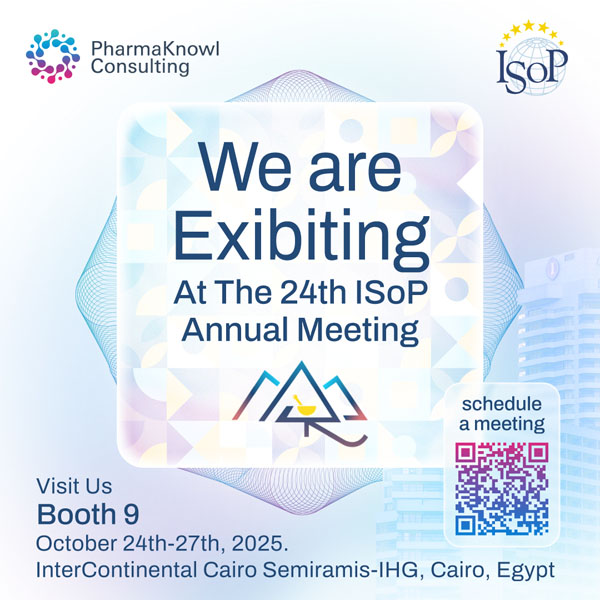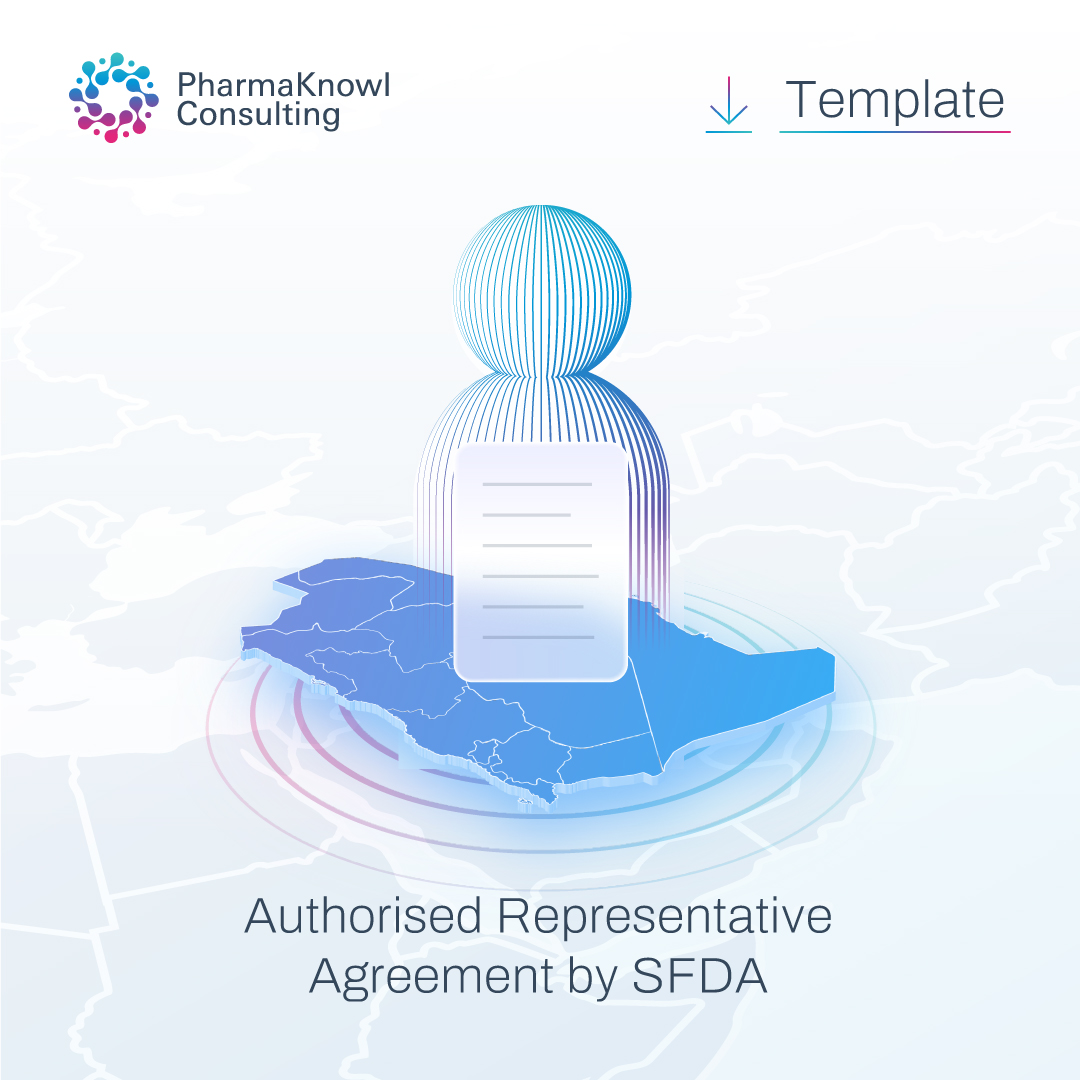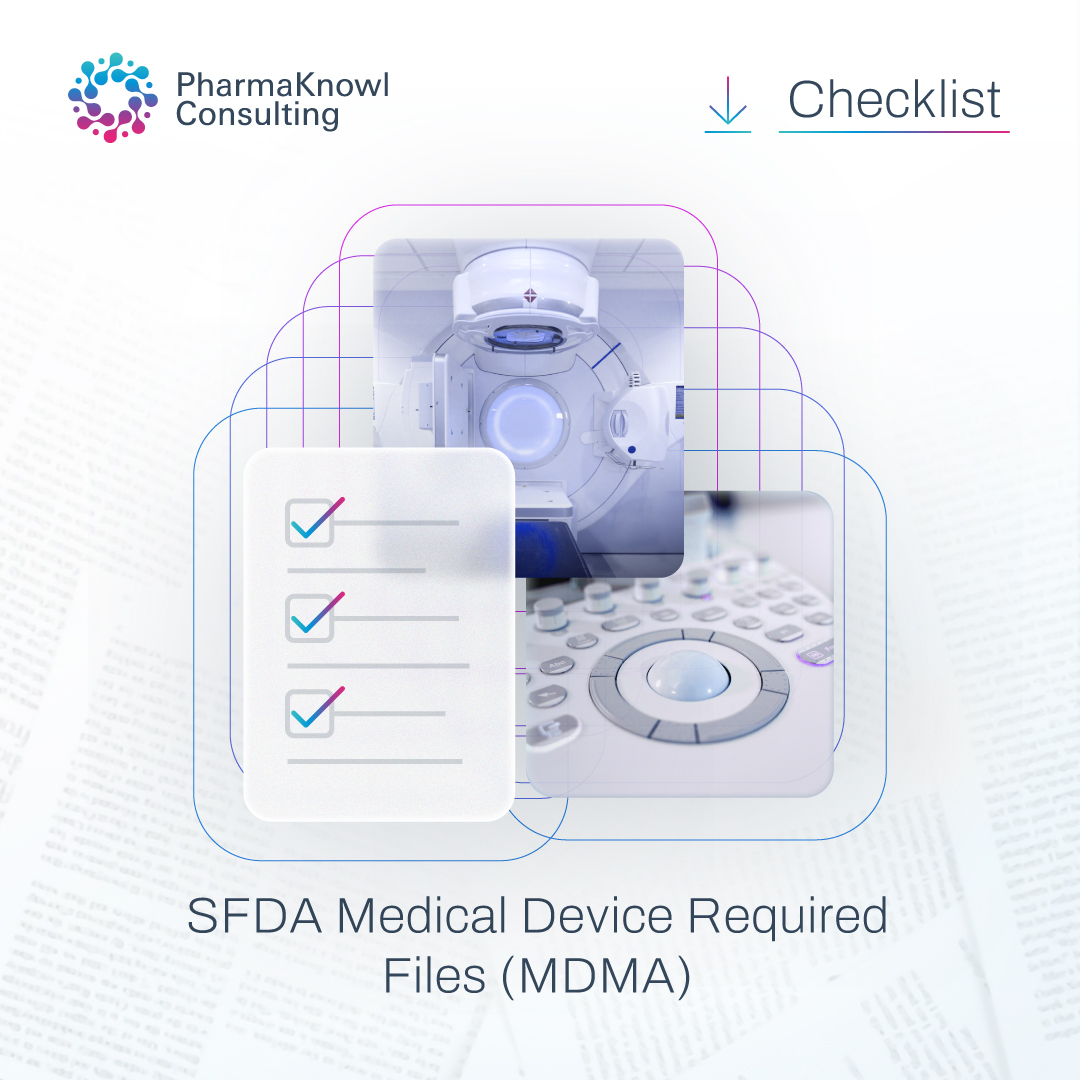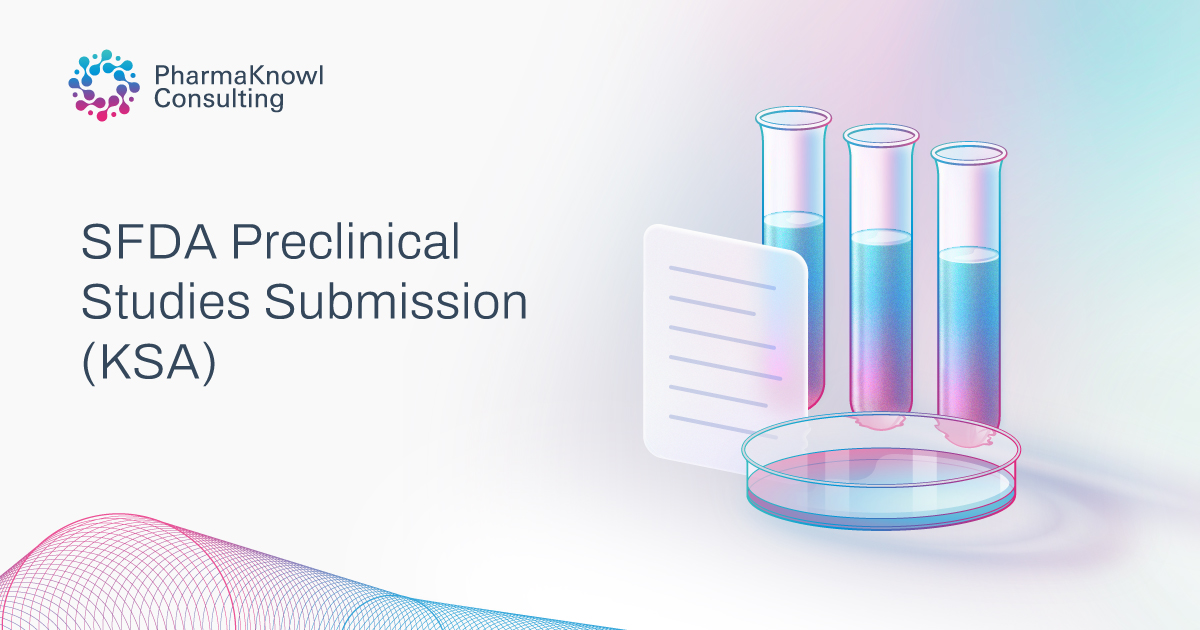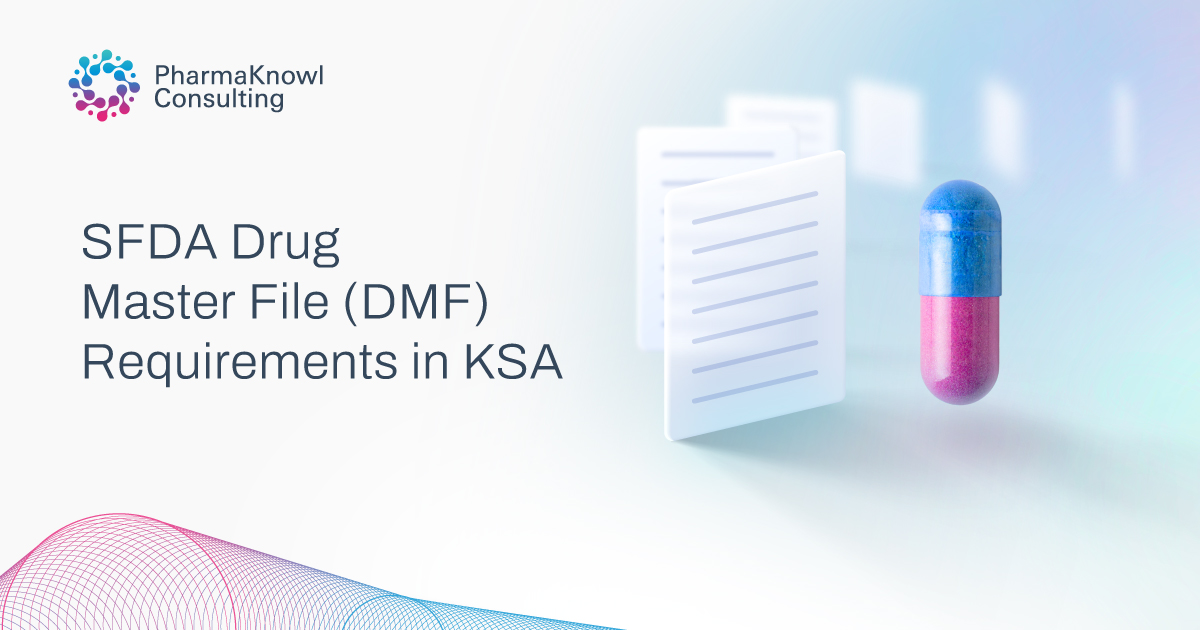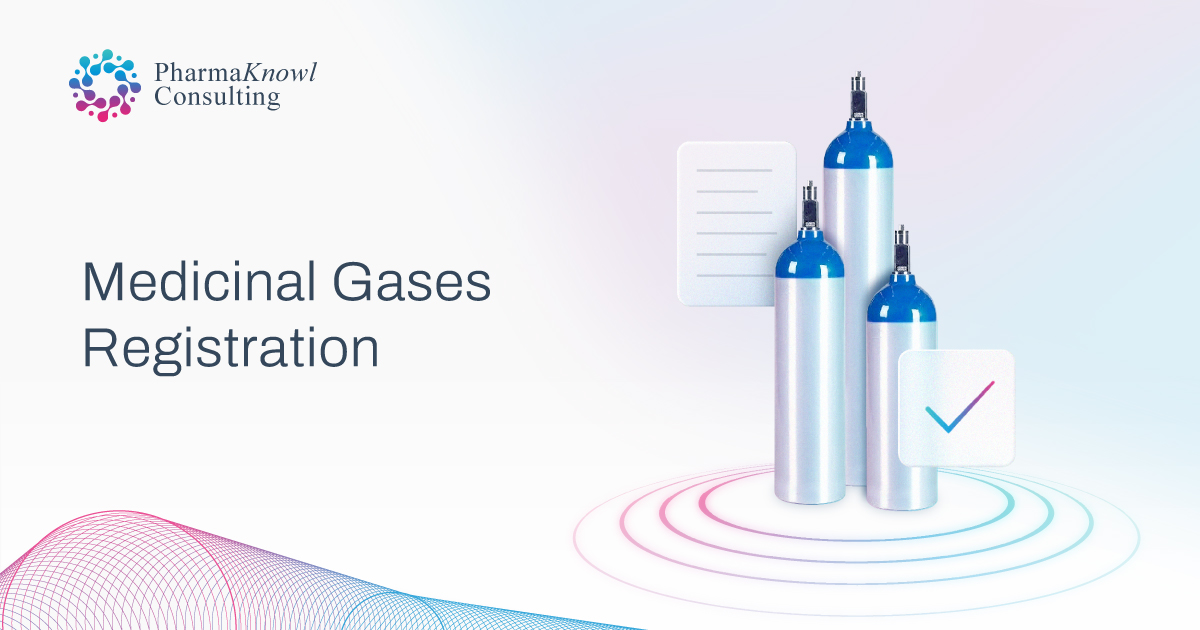
About the Author
Heba Rasheed
I am a Pharmacists, working as a Regulatory Affairs Specialist in PharmaKnowl. Experienced in Pharma and MedTech regulations.
This article describes the procedures and requirements for submitting an SFDA registration application for medicinal gas products in Saudi Arabia.
What are Medicinal gases?
Medicinal gases are gases used in medical procedures as key components of Life-supporting systems in human beings. They are packed as compressed gas under pressure in cylinders or liquefied gas at high or low pressure. They are administered to patients through designated valves or evaporation and delivery using hospital delivery systems.
Medicinal Gas Classes
Medicinal gases are classified into two main categories as follows:
- Drug Medicinal Gases
- Medical Device Gases
Medicinal Gases as a Drug
Registration of medicinal (pharmaceutical) gases in Saudi Arabia will be applicable starting from 2022 in three stages as follows:
| SFDA registration | – Drug barcodeing (Track and Trace) – Pharmacovigilance system – Pricing | |
| First stage (Starting in 2022) | Voluntary | Voluntary |
| The second stage (Starting in 2023) | Mandatory | Voluntary |
| Third stage (Starting in 2024) | Mandatory | Mandatory |
Medicinal gases with the following medical claims will be registered under the Drug sector as Generic products.
| Gas Name | Gas Status | Indication |
| Oxygen (O2) | Liquid | As a replacement for ordinary ambient/atmospheric air whenever needed, e.g., during ventilatory therapy and/or in anaesthesia, as part of the fresh gas flow, e.g., combined with oxygen to achieve a desired inspired oxygen fraction. As a source of clean air for immunosuppressed patients, such as those undergoing post-organ/cell transplants or those with severe burns. It can also be used as a carrier gas for anaesthetic agents. It drives ventilators and incubators, providing uncontaminated and controlled air flows and helping to reduce the high concentration of oxygen exposure. |
| Oxygen (O2) | Compressed | Provides the pain-relieving properties of nitrous oxide with the benefits of additional oxygen without producing unconsciousness. It is a widely used analgesic for acute, short-term pain relief in a diverse range of clinical situations, from painful procedures to childbirth, for the treatment of short-term pain conditions of mild to moderate intensity when rapid analgesic onset and offset effects are wanted. It is an analgesic with a very fast onset of action and is quickly eliminated from the body. Midwives, hospitals and the ambulance service widely use it. It is used exclusively for short-term procedures inevitably involving pain, including (but not limited to): – Acute Trauma – Tooth extraction and other brief procedures in dental works – wound and burn dressing, wound debridement and suturing – fracture and joint manipulation – Colonoscopy – Venopuncture – Labour. |
| Nitrogen (N2) | Compressed | Gas mixture for lung function test |
| Carbon Dioxide (CO2) | Compressed | Respiratory stimulation during and after anaesthesia |
| Used extensively in various surgical procedures for both analgesia and anaesthesia. For the treatment of short-term pain conditions of mild to moderate intensity when rapid analgesic onset and offset effects are wanted. It is an anaesthetic agent for use with any other anaesthetic agent administered intravenously or by inhalation. | Compressed | Used extensively in various surgical procedures for both analgesia and anaesthesia. For the treatment of short-term pain conditions of mild to moderate intensity when rapid analgesic onset and offset effects are wanted. It is an anaesthetic agent for use with any other anaesthetic agent administered intravenously or inhaled. |
| Synthetic Air | Compressed | The therapeutic use of inhaled nitric oxide is based on its ability to achieve potent and sustained pulmonary vasodilation without significantly decreasing systemic vascular tone. It is produced in mixtures with Nitrogen N2 at different concentrations: 250 ppm, 450 ppm, 800 ppm, and 900 ppm. In conjunction with ventilatory support and other appropriate active substances, it is indicated for the treatment of newborn infants 34 weeks of gestation with hypoxic respiratory failure associated with clinical or echocardiographic evidence of pulmonary hypertension, to improve oxygenation and to reduce the need for extracorporeal membrane oxygenation. As part of the treatment of peri- and postoperative pulmonary hypertension in adults and newborn infants, infants and toddlers, children and adolescents, ages 0-17 years, in conjunction with heart surgery, to selectively decrease pulmonary arterial pressure and improve proper ventricular lar function and oxygenation |
| Medical Air | Compressed | The therapeutic use of inhaled nitric oxide is based on its ability to achieve potent and sustained pulmonary vasodilation without significantly decreasing systemic vascular tone. It is produced in mixtures with Nitrogen N2 at different concentrations: 250 ppm, 450 ppm, 800 ppm, and 900 ppm. In conjunction with ventilatory support and other appropriate active substances, it is indicated for the treatment of newborn infants 34 weeks of gestation with hypoxic respiratory failure associated with clinical or echocardiographic evidence of pulmonary hypertension, to improve oxygenation and to reduce the need for extracorporeal membrane oxygenation. As part of the treatment of peri- and postoperative pulmonary hypertension in adults and newborn infants, infants and toddlers, children and adolescents, ages 0-17 years, in conjunction with heart surgery, to selectively decrease pulmonary arterial pressure and improve proper ventricular function and oxygenation. |
| Nitric Oxide (NO) / Nitrogen (N2) mixture | Compressed | For extracorporeal circulation (CEC), a Carbon Dioxide /Oxygen Medical Gas Mixture is used to stimulate respiration after a period of apnea and to manage chronic respiratory obstruction after the obstruction has been removed. The mixture can also be used to stimulate spontaneous respiration during normobaric Helium can administration of oxygen, e.g., for emergency treatment of CO-intoxication or prevention of hypocapnia in hyperventilation. |
| Nitrous Oxide (N2O) / Oxygen (O2) mixture | Compressed | For extracorporeal circulation (CEC), a Carbon Dioxide /Oxygen Medical Gas Mixture is used to stimulate respiration after a period of apnea and to manage chronic respiratory obstruction after the obstruction has been removed. It is also used to stimulate spontaneous respiration during normobaric administration of oxygen, e.g., for emergency treatment of CO-intoxication or prevention of hypocapnia in hyperventilation. |
| Helium (He) / Oxygen (O2) mixture | Compressed | For extracorporeal circulation (CEC), a Carbon Dioxide /Oxygen Medical Gas Mixture is used to stimulate respiration after a period of apnea and to manage chronic respiratory obstruction after the obstruction has been removed. The mixture can also be used to stimulate spontaneous respiration during normobHelium canc administration of oxygen, e.g., for emergency treatment of CO-intoxication or prevention of hypocapnia in hyperventilation. |
| Carbon Dioxide (CO2) / Oxygen (O2) mixture | Compressed | Helium often treats fixed partial upper airway obstructions or increased air resistance. This will help patients breathe easier. It is indicated to assist the flow of oxygen into the alveoli and to reduce the work of breathing in patients with severe airway obstruction (upper or lower). Helium can be used for nebulization therapy as the driving gas for generating aerosol and as the carrier gas for inhaling aerosol. |
Route of registration
Medical gases will be registered through the Saudi Drug Registration System (eSDR). The file structure will adhere to the standard SFDA drug registration requirements.
Medicinal Gases Registration Requirements
Module 1: The requirements from module 1 are below.
| Section | Requirements |
| Module 1 | Regional Administrative Information |
| 1.0 | Cover letter |
| 1.1 | Table of content |
| 1.2 | Application form |
| 1.3 | Product information |
| 1.3.1 | Summary of Product Characteristics (SPC) |
| 1.3.2 | Labelling |
| 1.3.3 | Patient information leaflet (PIL) |
| 1.3.3.1 | Arabic leaflet |
| 1.3.3.2 | English leaflet |
| 1.3.4 | Artwork |
| 1.6 | Pharmacovigilance |
| 1.7 | Certificates and documents |
| 1.7.1 | GMP certificate |
| 1.7.2 | CPP or Free-sales |
| 1.7.3 | Certificate of analysis – drug substance / finished product |
| 1.7.7 | Certificate of suitability for TSE |
| 1.7.10 | Letter of access or acknowledgement to DMF |
| 1.9 | Response to questions |
Module 3: The requirements for Module 3 are listed below.
| Module 3 | Quality |
| 3.2.S | Container/closure system |
| 3.2.S.7 | Stability |
| 3.2.P | Drug Product |
| 3.2.P.1 | Description and composition of the drug product |
| 3.2.P.2 | Pharmaceutical development |
| 3.2.P.3 | Manufacture |
| 3.2.P.3.5 | Process validation and/or evaluation |
| 3.2.P.5 | Container/closure system |
| 3.2.P.5.1 | Specification |
| 3.2.P.5.2 | Analytical procedures |
| 3.2.P.5.4 | Batch analyses |
| 3.2.P.7 | Container / closure system |
| 3.2.P.8 | Stability |
General rules
Medicinal gases must comply with the following:
- GMP: Guide to Good Manufacturing Practice for Medicinal Products and related Annexes (Annexe 6).
- Labelling Requirements: The GCC Guidance for Presenting the SPC, PIL, and Labelling Information.
Medicinal Gases Classified as Medical Devices
They are the gases or gas mixtures used to operate or sterilise medical devices and supplies, or for treatment or diagnosis. They do not cause pharmacological, immunological, or metabolic action to achieve their primary purpose.
Read: Medical Device Registration
Exceptions:
- Accessories during use fall under the definition of a medical device and are subject to the requirements of the medical devices sector
- Gases that are manufactured or produced in hospitals.
- Cylinders on their own (empty cylinders).
Note: Gas cylinders must comply with the national standards (SFDA.MD /ISO 32:2017).
| Gas/gas mixture for medical use | Shoulder colour | RAL number |
| Oxygen | White | 9010 |
| Nitrous Oxide | Blue | 5010 |
| Carbon Dioxide | Grey | 7037 |
| Helium | Brown | 8008 |
| Argon | Dark green | 6001 |
| Medical air/Synthetic air | White/Black | 9010/9005 |
| Nitrous Oxide/Oxygen | Blue/White | 5010/9010 |
| Helium/Oxygen | Brown/White | 8008/9010 |
| Carbon Dioxide/Oxygen | Gray/White | 7037/9010 |
| Nitric Oxide/Nitrogen | Turkish Blue if NO <=1000 ppm (VN) | 5018 |

